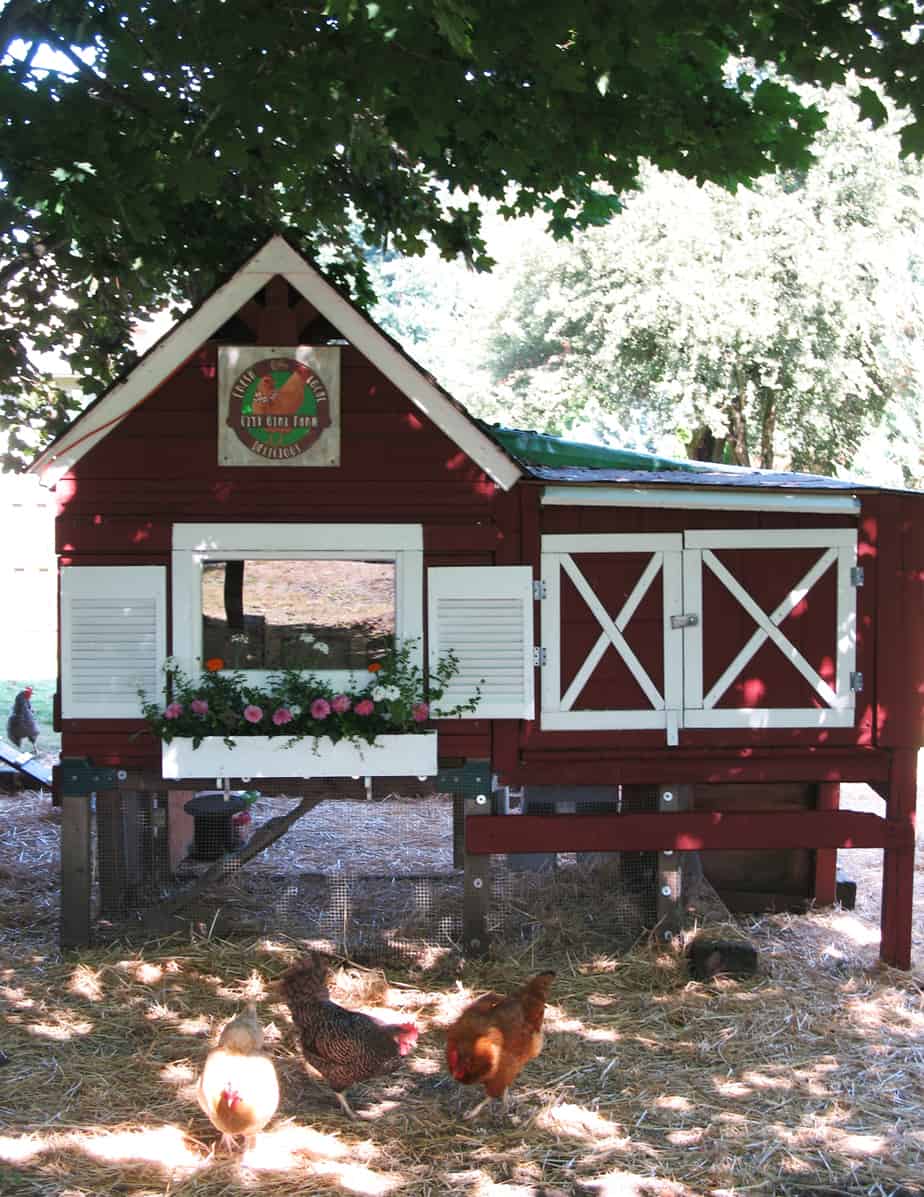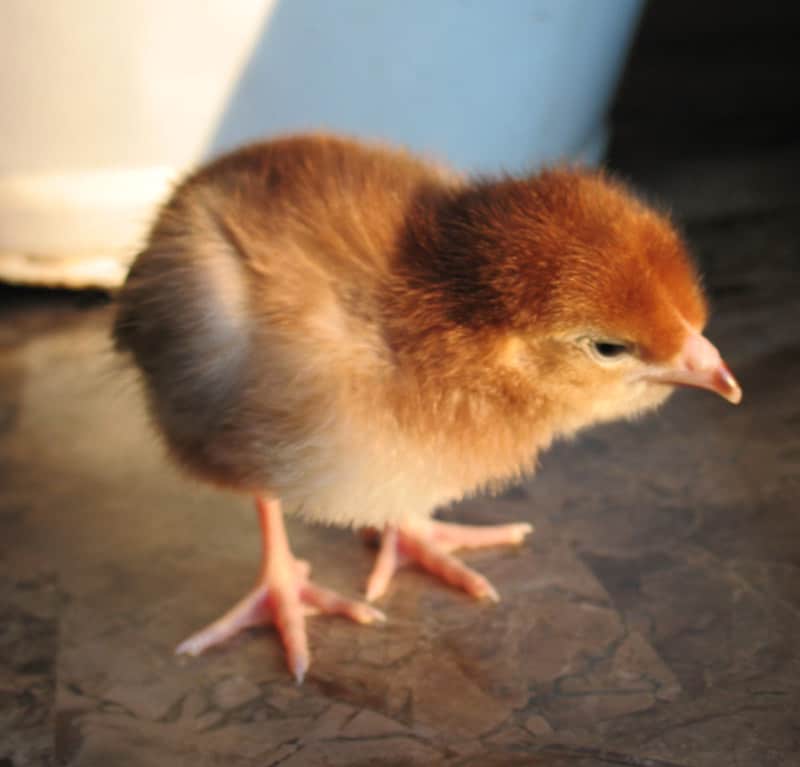 Springtime means baby chick time. It also means coop time, if you’re just getting started with chickens. The great thing about a chicken coop is that you can do it yourself, convert something old into a coop, find a coop from places like Craigslist, buy a pre-made coop (even places like Costco carries them now) or invent something new, out of your own imagination.
Springtime means baby chick time. It also means coop time, if you’re just getting started with chickens. The great thing about a chicken coop is that you can do it yourself, convert something old into a coop, find a coop from places like Craigslist, buy a pre-made coop (even places like Costco carries them now) or invent something new, out of your own imagination.
The possibilities are nearly endless. You will need adequate space, protection from wind and predators, and a few other small details. It’s all really pretty easy.
How Big Should Your Coop Be?
A big question to start with is how large the coop will need to be. The answer depends in part on how many hens you have (and sometimes which breeds, as the smaller breeds such as Bantams need less space), how large the chicken run will be, and if they will have any free range access. Minimal coop (indoors) requirements are around 4 square feet per hen (or 3 square feet for Bantams). Keep in mind, this is MINIMAL, and if you can give the girls more space they will be happier and have less reason to fight with each other (think of too many children sharing the same bedroom–sometimes they just need their own space).
The chicken run (a completely fenced/wired in yard area) is where the flock will hang out most days so they need a bit more space than in the coop (they generally only use the coop for sleeping at night and laying eggs during the day). A good gauge for space in the run is about 10 square feet (ground space) per bird.
What Should You Include in Your Coop?
Nest Boxes (generally 2 birds per box is a good number): These nest boxes should be semi-private, and out of the way off the hubbub of the coop. Chickens prefer to lay their eggs in a calm, comfortable environment. Don’t hang a big light right above the nest boxes, and don’t forget to line the bottoms of the boxes with a nice squishy layer of pine shavings (both for their comfort as well as egg-breaking protection—hens stand up to lay their eggs which will be less likely to crack if they land in something soft).
The boxes themselves should be around 12×12 inches, give or take (or around the size of a shoe box). Basically large enough for a chicken to lie in without discomfort. It’s not uncommon for the whole flock to favor one nest box, but allowing more than one gives choice to all as well as alternatives when the line is long in the box everyone wants to use.
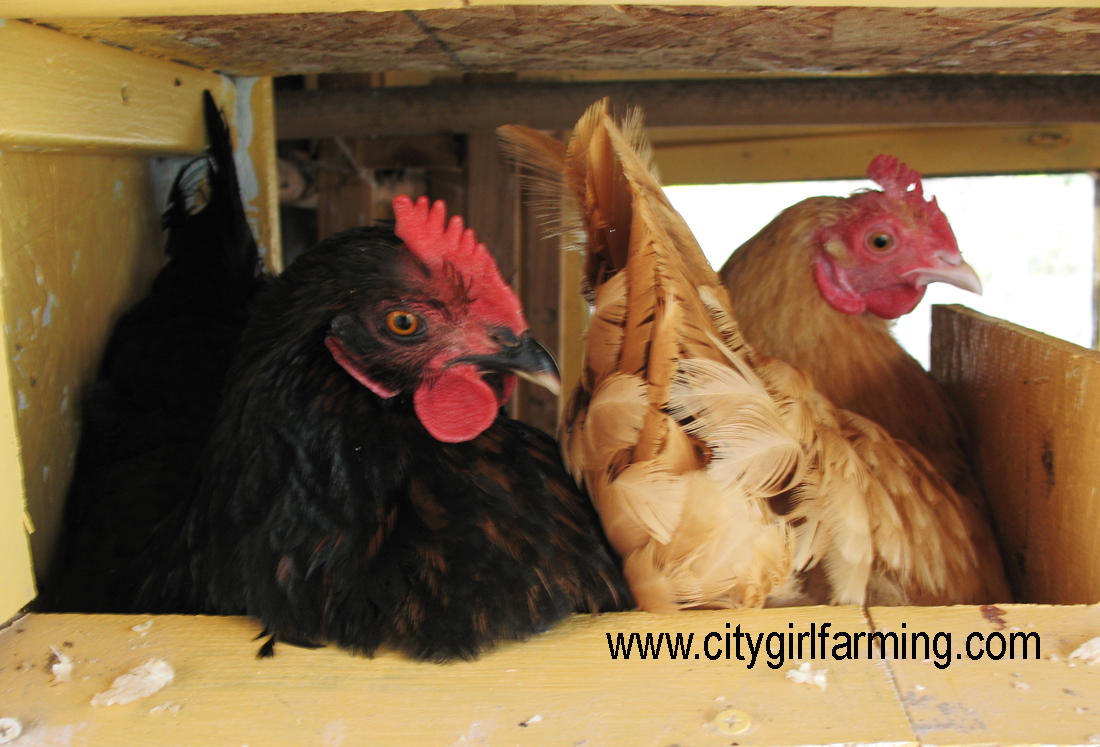
Roosts/Perches (allow for at least 18” of roost space per bird): Chickens love to sleep off the ground because they feel safer that way. Providing a wooden pole (like a closet pole or something similar) will give them a place to settle in at night. This roost should be off the ground some, a couple feet if possible, but also leaving enough ‘head space’ (18-24 inches is a good space) to allow them to fly up on the roost without banging their heads on the ceiling. The roost will also need to be 12-18 inches out from the wall of the coop in order for them to comfortably sleep on the roost (they need room for their fluffy butts). Although 18 inches or so per bird is a good measure when figuring out how many feet of roosting space you need, even more is better, if you have the space.
Ventilation: Although chickens don’t like to be caught in the wind, and they need a space to sleep that’s cozy, don’t forget to plan for ventilation space. This will help the coop with fresh air as well as cooling it down in the summer months when it’s hot. If you have windows in the coop that open, make sure to add hardwire cloth behind them (replacing the screen with it). A typical window screen will not keep predators out. Other good ways to add ventilation to the coop is through drilling large holes in the coop walls (and cover them with hardware cloth) below the roof, or cutting out rectangular holes that are the same size as heater vent covers (you know, like the ones in your house with the little adjusters so you can have them completely open or closed or somewhere in between). Or cutting ‘windows’ in the walls that are covered with hardwire cloth in the summer, with the option of adding Plexiglas to them on colder winter days.
Ideas for a Coop of Your Own
There are literally thousands of ways to build a great coop for your backyard flock. I’ve seen people convert sheds, old plastic (kid) play forts, a rabbit hutch turned chicken coop, fancy coops that I’d like to live in myself, and everything in between.
Here’s a look at the first one I built. I started with a 2 story play structure and turned it into a single story, off the ground coop. (BTW, if I can do this, ANYONE can do it. The most complicated thing I’ve ever built previous to this coop was a very simple night stand consisting of a top and some stick legs. True story.)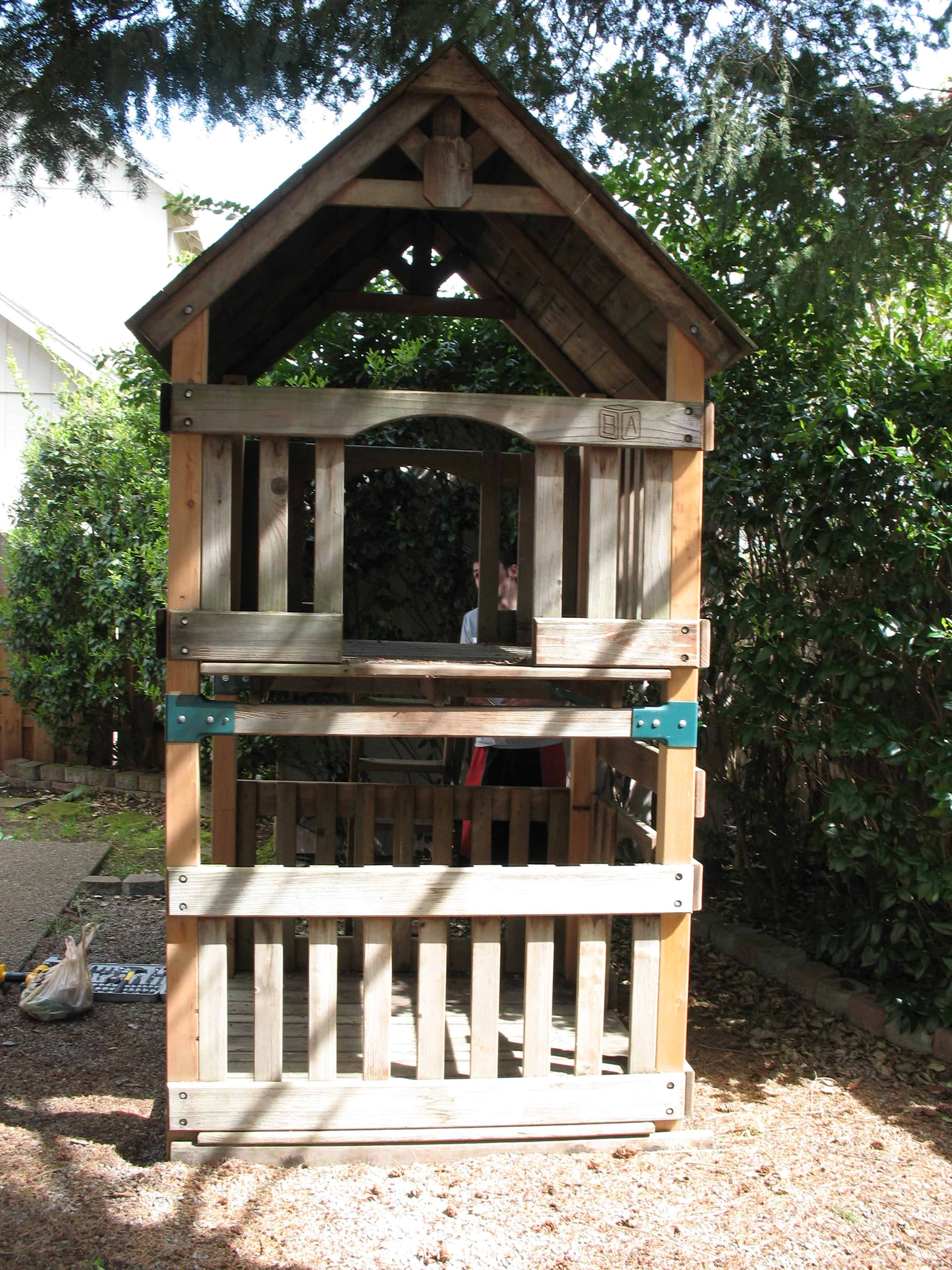
Of course I won’t tell you how LOOOOOOOOOONG it took me with limited skills and limited tools, but, regardless, I still did it. ALL. BY. MY. SELF.
I bought this second small coop off Craigslist for $40 when I decided I wanted a nursery coop. It’s a converted dog house. The people who built it put one side of the roof on hinges and added a cupboard door to the side, nest boxes and a roosting pole in the inside. This would be perfect for 2 or 3 chickens. Or a mama hen sitting on some eggs. Or a bully that needs to have some time out space. And for $40, plus the cost of a run to add to it, you can easily have a great coop for under $100.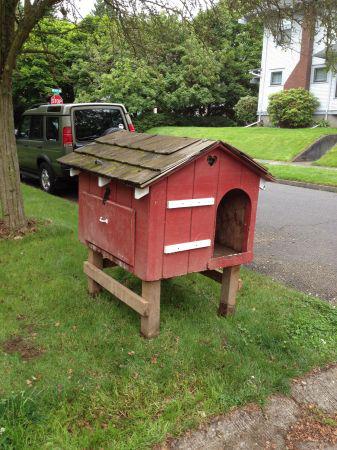
Regardless of how you do it and what your coop ends up looking like, think of the coop as an investment. It’s definitely the most expensive part of starting your own backyard flock, but if done right, it will last for years.
If you want more inspiration, here’s a link to a BUNCH of chicken coop plans, most of them free. The pictures alone will get you excited whether you’ve started your coop or are still dreaming of it.
